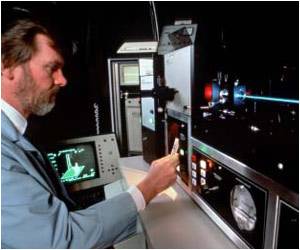A research team may produce a wide variety of 2-D and 3-D structures that push the boundaries of the burgeoning field of DNA nanotechnology.

The field of DNA nanotechnology utilizes nature's design rules and the chemical properties of DNA to self-assemble into an increasingly complex menagerie of molecules for biomedical and electronic applications. Some of the Yan lab's accomplishments include building Trojan horse-like structures to improve drug delivery to cancerous cells, electrically conductive gold nanowires, single molecule sensors and programmable molecular robots.
With their bio-inspired architectural works, the group continues to explore the geometrical and physical limits of building at the molecular level.
"People in this field are very interested in making wire frame or mesh structures," said Yan. "We needed to come up with new design principles that allow us to build with more complexity in three dimensions."
In their latest twist to the technology, Yan's team made new 2-D and 3-D objects that look like wire-frame art of spheres as well as molecular tweezers, scissors, a screw, hand fan, and even a spider web.
The Yan lab, which includes ASU Biodesign Institute colleagues Dongran Han, Suchetan Pal, Shuoxing Jiang, Jeanette Nangreave and assistant professor Yan Liu, published their results in the March 22 issue of Science.
Advertisement
In nature, the Holliday junction twists the double-stacked strands of DNA at an angle of about 60-degrees, which is perfect for swapping genes but sometimes frustrating for DNA nanotechnology scientists, because it limits the design rules of their structures.
Advertisement
Making the new structures that Yan envisioned required re-engineering the Holliday junction by flipping and rotating around the junction point about half a clock face, or 150 degrees. Such a feat has not been considered in existing designs.
"The initial idea was the hardest part," said Yan. "Your mind doesn't always see the possibilities so you forget about it. We had to break the conceptual barrier that this could happen."
In the new study, by varying the length of the DNA between each Holliday junction, they could force the geometry at the Holliday junctions into an unconventional rearrangement, making the junctions more flexible to build for the first time in the vertical dimension. Yan calls the backyard barbeque grill-shaped structure a DNA Gridiron.
"We were amazed that it worked!" said Yan. "Once we saw that it actually worked, it was relatively easy to implement new designs. Now it seems easy in hindsight. If your mindset is limited by the conventional rules, it's really hard to take the next step. Once you take that step, it becomes so obvious."
The DNA Gridiron designs are programmed into a viral DNA, where a spaghetti-shaped single strand of DNA is spit out and folded together with the help of small 'staple' strands of DNA that help mold the final DNA structure. In a test tube, the mixture is heated, then rapidly cooled, and everything self-assembles and molds into the final shape once cooled. Next, using sophisticated AFM and TEM imaging technology, they are able to examine the shapes and sizes of the final products and determine that they had formed correctly.
This approach has allowed them to build multilayered, 3-D structures and curved objects for new applications.
"Most of our research team is now devoted toward finding new applications for this basic toolkit we are making," said Yan. "There is still a long way to go and a lot of new ideas to explore. We just need to keep talking to biologists, physicists and engineers to understand and meet their needs."
Source-Eurekalert













